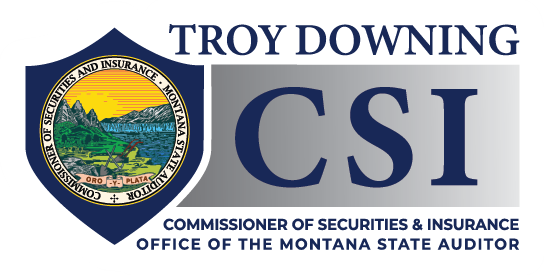Nearly 16,000 Montanans who purchased Blue Cross Blue Shield insurance through the marketplace are set to receive partial reimbursement for premiums paid between 2018 and 2020.
The Affordable Care Act requires insurers selling plans on the marketplace to spend a certain percentage of the premiums they collect on medical or health-related expenses like doctor visits, drug prescriptions and hospital stays. If an insurance company doesn’t meet that requirement, it must issue premium reimbursements to its customers.
That threshold, known as a Medical Loss Ratio standard, is 85% for members who have insurance through the large group market and 80% for members who have insurance through the individual market. Regulators evaluate an insurance company’s spending over a rolling three-year period to determine the company’s Medical Loss Ratio. If more than 15% of premiums (for the large group market) or 20% of premiums (for the individual market) go toward administrative costs or profits, the insurer is required to issue a premium reimbursement equal to the percentage by which it exceeded the threshold. In 2020, BCBS spent 72.3% of the $127 million it received in Montana premiums on health care and activities to improve health care, falling shy of the 80% standard by 7.7%.
A total of 15,782 Montanans who purchased BCBS insurance through the individual marketplace between 2018 and 2020 are set to receive a reimbursement, which BCBS is required to issue no later than Sept. 30. Reimbursement will be issued as a check mailed to members or as a credit for future premium payments. The average reimbursement is $623.
John Doran, vice president of external affairs for Blue Cross Blue Shield of Montana, said eligible insurance consumers don’t have to do anything to receive the reimbursement, but can call the number on the back of their insurance card for guidance if they don’t receive a notice in the mail or misplace the check.
“We saw a lot of disruption to a normal health care year, if there is ever such a thing, last year.”
JOHN DORAN, VICE PRESIDENT OF EXTERNAL AFFAIRS FOR BLUE CROSS BLUE SHIELD OF MONTANA
Doran said the company sets premium rates based on the previous two years of data on the cost of, and demand for, medical services. He said that while BCBS tries to align premiums with these calculations, variabilities can make it difficult to stay within the Medical Loss Ratio. When that happens, as it did this year, the company is required to issue reimbursements.
Doran said BCBS issued a reimbursement last year as well. He said that was the first time the company had to issue one since it started selling plans on the Affordable Care Act marketplace in 2014.
“When we project ahead, there are a lot of variables that can change the amount that we either pay or don’t pay in a given year. Variations in the actual claims may result in some group — or in this case, individual — policies not meeting the Medical Loss Ratio standards and therefore receiving a reimbursement,” Doran said. “The Medical Loss Ratio rule is intended to protect consumers from some of those uncertainties in the rate-setting process. The simple fact that we are making reimbursements this year is just a signal that the system is working as intended.”
Doran said the pandemic created volatility in the insurance marketplace, with people acquiring new coverage, losing coverage due to layoffs, or switching insurance providers. He said there were similar disruptions to health care delivery.
“We saw a lot of disruption to a normal health care year, if there is ever such a thing, last year. In the height of the pandemic, most hospitals across the state, and even across the country, were so overwhelmed with COVID patients that they had to stop doing traditional elective surgeries like knee replacements and hip surgeries.”
He said he expects disruptions seeded by the pandemic to continue into 2022.
Doran said about 22,000 Montanans currently have BCBS coverage under the individual exchange marketplace. Another company, Mountain Health Co-op (formerly Montana Health Co-op) provides coverage to 19,257 Montanans who purchased plans on the individual marketplace. Mountain Health Co-op was not required to issue reimbursements this cycle, nor has it had to in the past. PacificSource, the only other company offering Montanans health insurance through the ACA exchange, was not required to issue reimbursements for the 2018-2020 period, though it did for the 2017-2019 period. PacificSource insures 9,300 members who obtained coverage through the ACA exchange, according to spokesperson Lee Dawson.
Montana Commissioner of Securities and Insurance spokesperson Sam Loveridge echoed Doran in saying that 2020 was a volatile year and most insurers spent less on claims than projected, “likely due to the pandemic.” In an email, he said he expects that those disruptions factored into insurers’ performance on the Medical Loss Ratio standard for the 2018-2020 period.
For the 2017-2019 cycle, the most recent period for which full data is available, Montana insurers issued more than $15 million in reimbursements to 29,135 customers, according to the Centers for Medicare & Medicaid Services.
Was this helpful?
Please give us your feedback!
Please let us know how we could improve this article.
